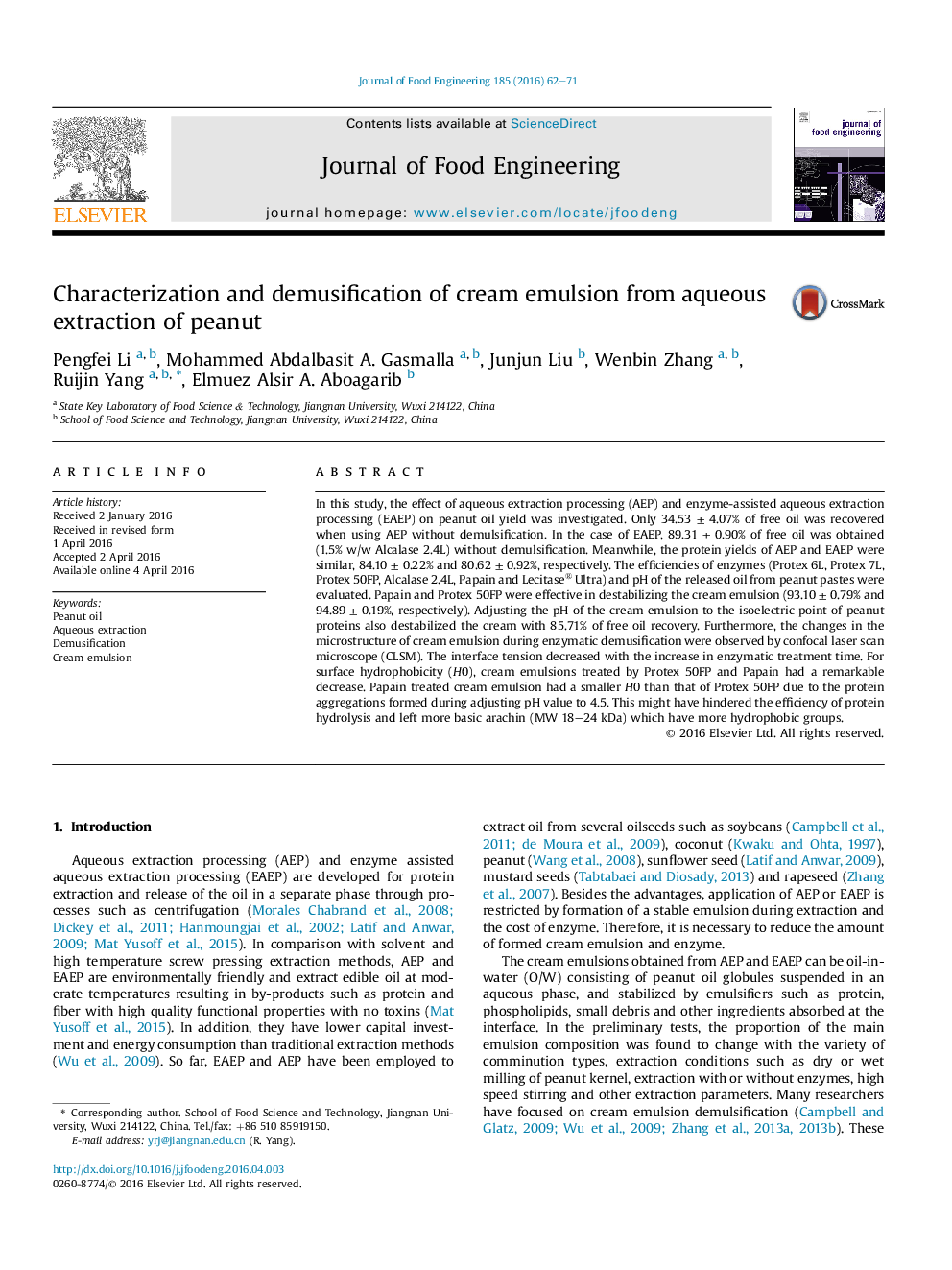| کد مقاله | کد نشریه | سال انتشار | مقاله انگلیسی | نسخه تمام متن |
|---|---|---|---|---|
| 222663 | 464286 | 2016 | 10 صفحه PDF | دانلود رایگان |
• Aqueous and enzyme assisted aqueous extraction of peanut oil were explored.
• The different mechanisms of enzymatic demulsification were investigated.
• The demulsification processes were observed by confocal laser scanning microscope.
• Enzymatic treatment and pH adjusting of the cream emulsion affected free oil yield.
• The interface tension decreased with the increase in enzymatic treatment time.
In this study, the effect of aqueous extraction processing (AEP) and enzyme-assisted aqueous extraction processing (EAEP) on peanut oil yield was investigated. Only 34.53 ± 4.07% of free oil was recovered when using AEP without demulsification. In the case of EAEP, 89.31 ± 0.90% of free oil was obtained (1.5% w/w Alcalase 2.4L) without demulsification. Meanwhile, the protein yields of AEP and EAEP were similar, 84.10 ± 0.22% and 80.62 ± 0.92%, respectively. The efficiencies of enzymes (Protex 6L, Protex 7L, Protex 50FP, Alcalase 2.4L, Papain and Lecitase® Ultra) and pH of the released oil from peanut pastes were evaluated. Papain and Protex 50FP were effective in destabilizing the cream emulsion (93.10 ± 0.79% and 94.89 ± 0.19%, respectively). Adjusting the pH of the cream emulsion to the isoelectric point of peanut proteins also destabilized the cream with 85.71% of free oil recovery. Furthermore, the changes in the microstructure of cream emulsion during enzymatic demusification were observed by confocal laser scan microscope (CLSM). The interface tension decreased with the increase in enzymatic treatment time. For surface hydrophobicity (H0), cream emulsions treated by Protex 50FP and Papain had a remarkable decrease. Papain treated cream emulsion had a smaller H0 than that of Protex 50FP due to the protein aggregations formed during adjusting pH value to 4.5. This might have hindered the efficiency of protein hydrolysis and left more basic arachin (MW 18–24 kDa) which have more hydrophobic groups.
Journal: Journal of Food Engineering - Volume 185, September 2016, Pages 62–71
